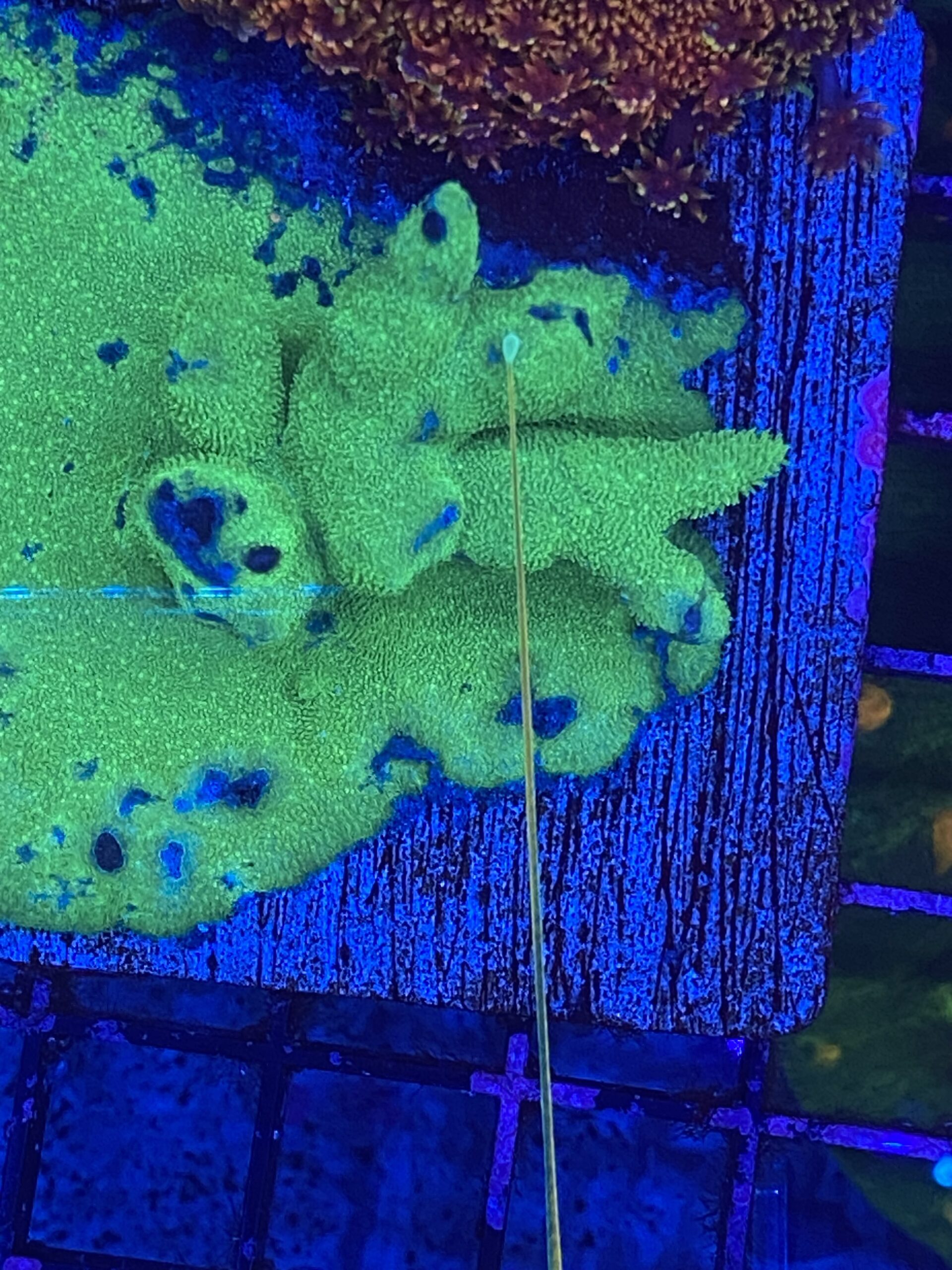After discussing coral selection, quarantining, placement, and nutrition there is still one other aspect of their keeping that needs to be considered, coral aggression. Since corals are sedentary and cannot move once they have settled into place or been mounted to the aquascape the initial feeling is that they are docile sitting ducks that just about anything in the tank can harm. However, this is anything but true.
Consider the environment in which they live. They are constantly attacked by myriad fish that given the chance will eat their polyps, tissue, or anything else they find appetizing. And unlike on land these fish have ready access to the entire coral, they do not have to climb a tree or dig underground to get the coral. In addition, seemingly every inch of usable space on the reef is taken up by something. That is different corals have developed different abilities to use up every niche within the complex reef structure. And lastly, in the aqueous environment in which corals find themselves, they are constantly exposed to bacteria, viruses, and fungi that unlike in air, have an easy time getting to them.

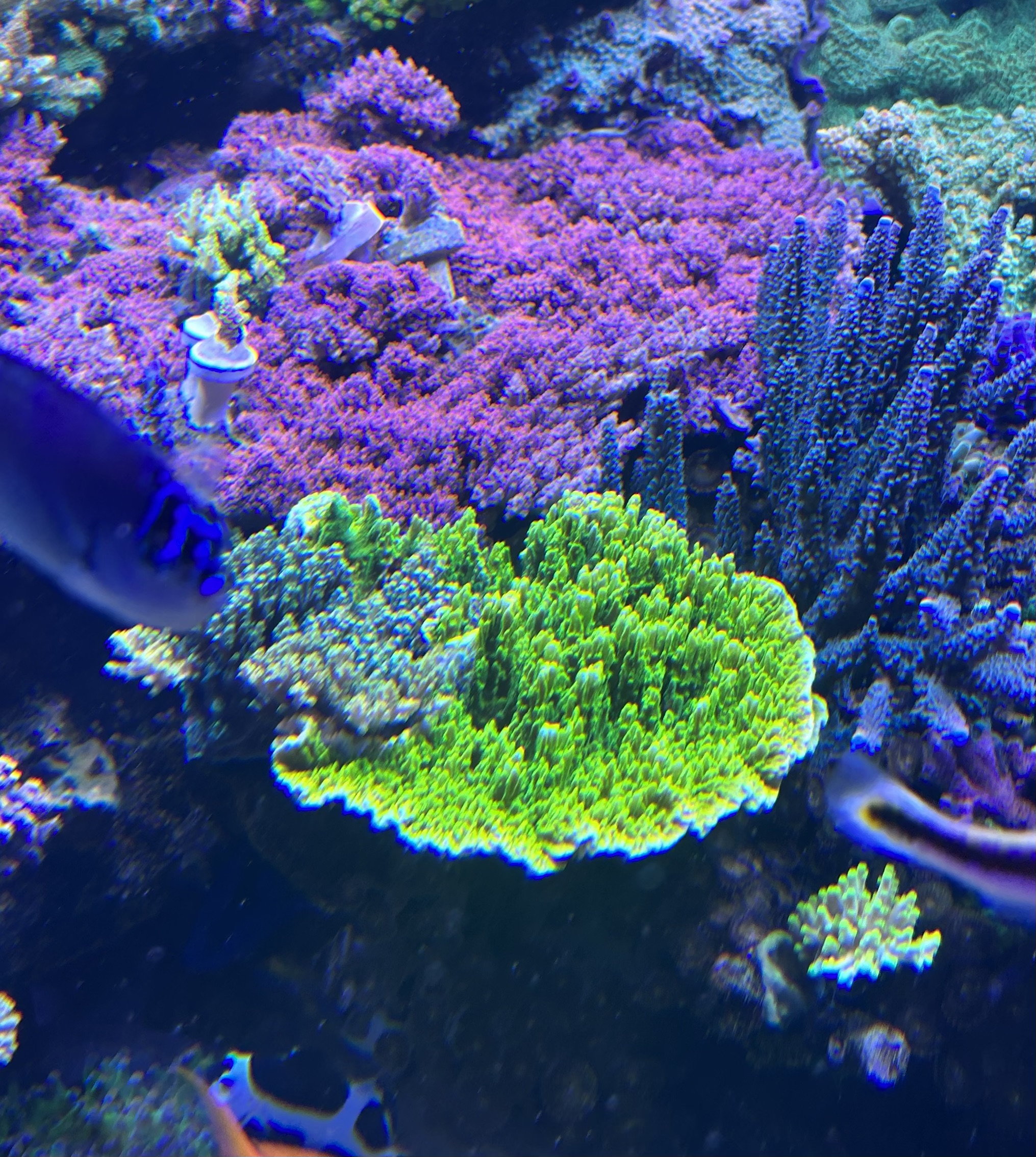
As a result of this corals have developed complex ways to defend themselves, lest they become readily eaten meals or the loser in every battle with a neighboring coral. I should point out that if you only look at your tank during the day, it is very likely that you will see minimal aggression exerted by its inhabitants. Therefore, you should always have a flashlight that shines a red light near the tank so that at night you can peek in on the tank and see the aggression that is going on. Just as most corals do not put out their polyps to full extension during the day to keep fish from picking or eating them, the same is true of the coral’s defense mechanisms and aggressive tendencies, which manifest themselves significantly more at night.
While this topic is not sexy or fun, it needs to be addressed, especially for those starting in the hobby, the reason being that if it is not understood and steps are not taken upfront to reduce it, it may cause significant harm in a tank. And if it is not understood how nasty corals can be there can be a loss of corals before this reason is determined. And considering how much time, effort, and money goes into growing corals we should understand that managing aggression is a critical part of the long-term success of a tank. It is possible to lose months or even years of coral growth in a single night if aggression is not managed, so understanding and managing it is critical. There are many different forms of coral aggression and while most corals only use one type of aggression, a few have multiple means of protecting themselves.
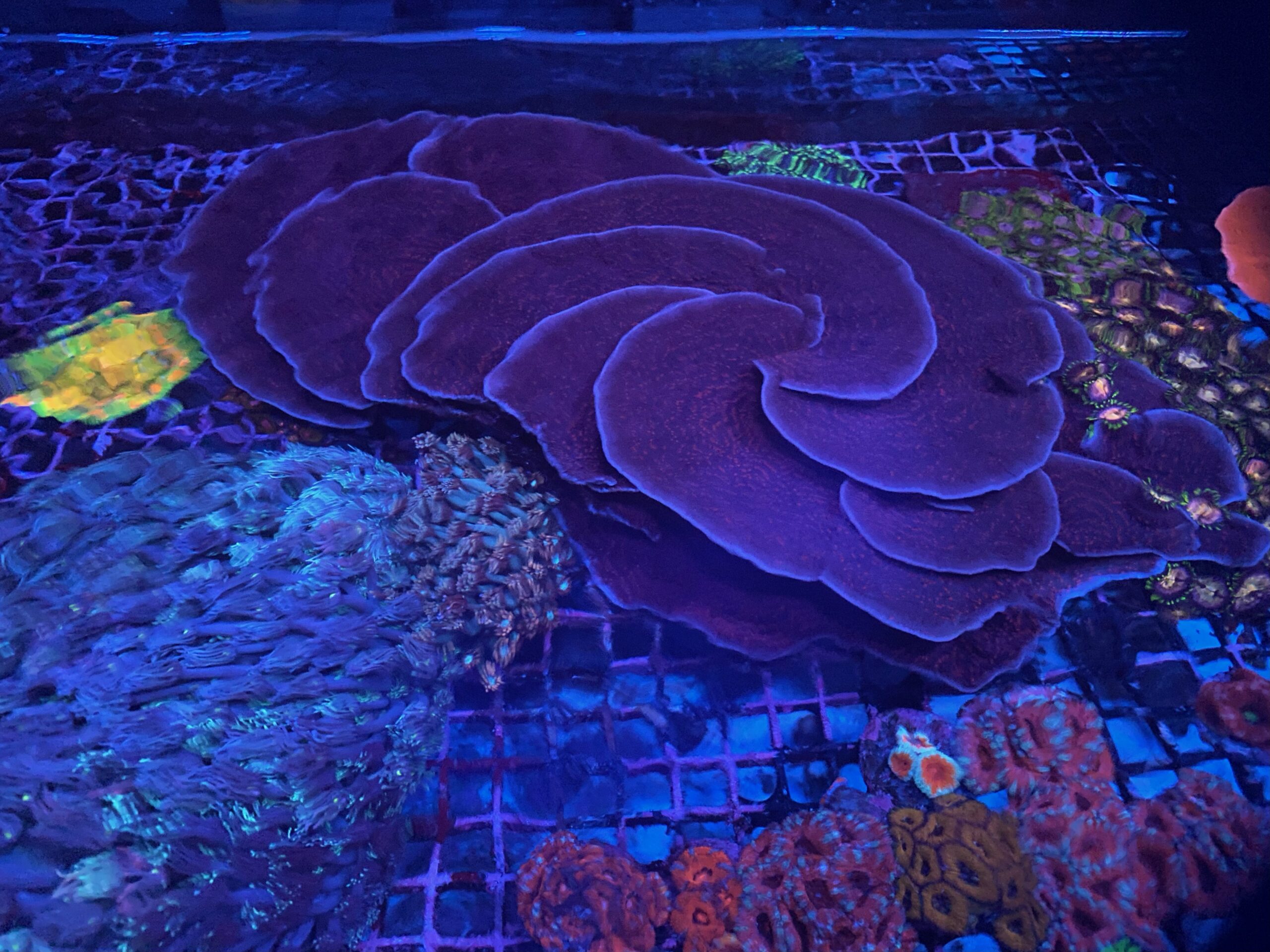
Overgrow and shade them out
The first and simplest type of aggression is also the one most easily managed. We all want our corals to grow fast, but some corals grow significantly faster than others. Most of these corals are also the ones that possess the least offensive means for aggression, that is when battling an aggressive coral they usually lose. Their means for compensating for this is to grow quickly, so quickly in fact that they do not use energy to attack their neighboring corals, they simply grow so fast that they overgrow and shade these neighboring corals. Acropora and Montipora are two of the best examples of this kind of aggression. Both of these corals grow very quickly given the right conditions and this is why when placing these corals in a tank understand that they may overgrow their neighbors, and especially any corals that are placed beneath them in a relatively short time.
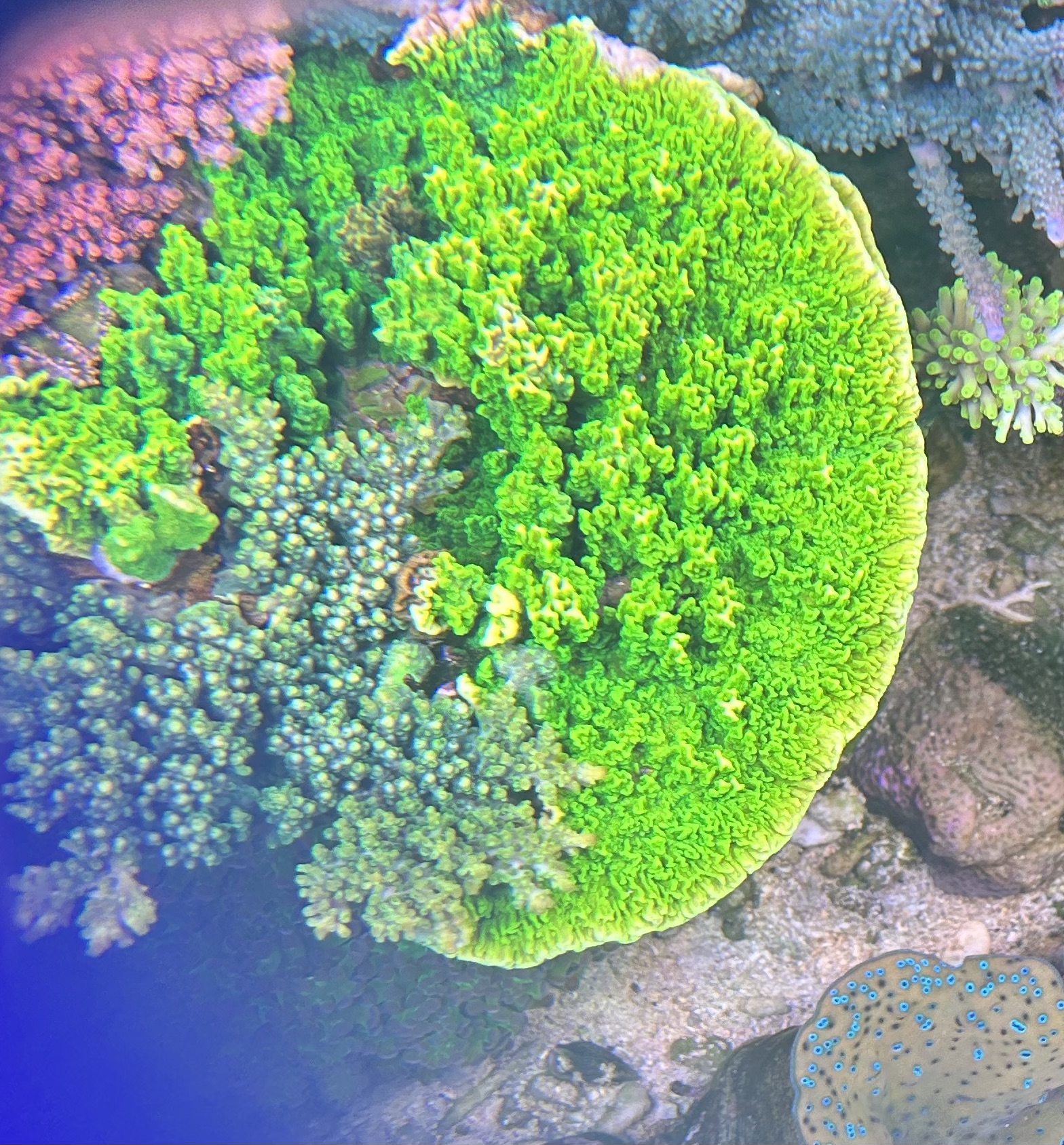
This is especially true of the plating Montiporas and the tabling Acroporas. These corals are the most aggressive at overgrowing neighboring corals. By overgrowing neighboring corals these corals effectively reduce the one critical necessity that most corals need: sunlight. By reducing the light reaching the corals that these corals have overgrown, they effectively starve out these corals as they can’t get the energy they require, so they eventually fade away. Fortunately, this overgrowth can be managed in that these corals are also some of the easiest to frag. If these corals start to overgrow their neighbors, the offending branches or sections can simply be cut off using coral clippers or even a saw.
It should be noted that the encrusting Montiporas are also very rapid growers and can overgrow areas quickly. But unlike their plating brethren these corals seemingly fuse into the aquascape and for this reason, are very difficult to remove. For this reason, these corals should be trimmed to prevent overgrowth when their skeletons are still thin and not fused into the live rock, otherwise, they can overgrow large sections of a tank and be almost impossible to remove.
Sweeper tentacles
The next type of aggression is more subtle and needs to be watched for, but it is still an effective means of killing neighboring corals and these are the sweeper tentacles. These tentacles are much longer than the normal tentacles on the coral and they are packed more fully with nematocysts. Nematocysts are specialized cells in the tentacles of corals and anemones that contain venomous or barbed thread that can be employed to capture prey or for self-defense. Sweeper tentacles are usually more numerous and more venomous than normal tentacles employed for prey capture. Some corals have more potent stings than others and some have these tentacles out most of the time, while others only employ them when they feel threatened by neighboring corals.
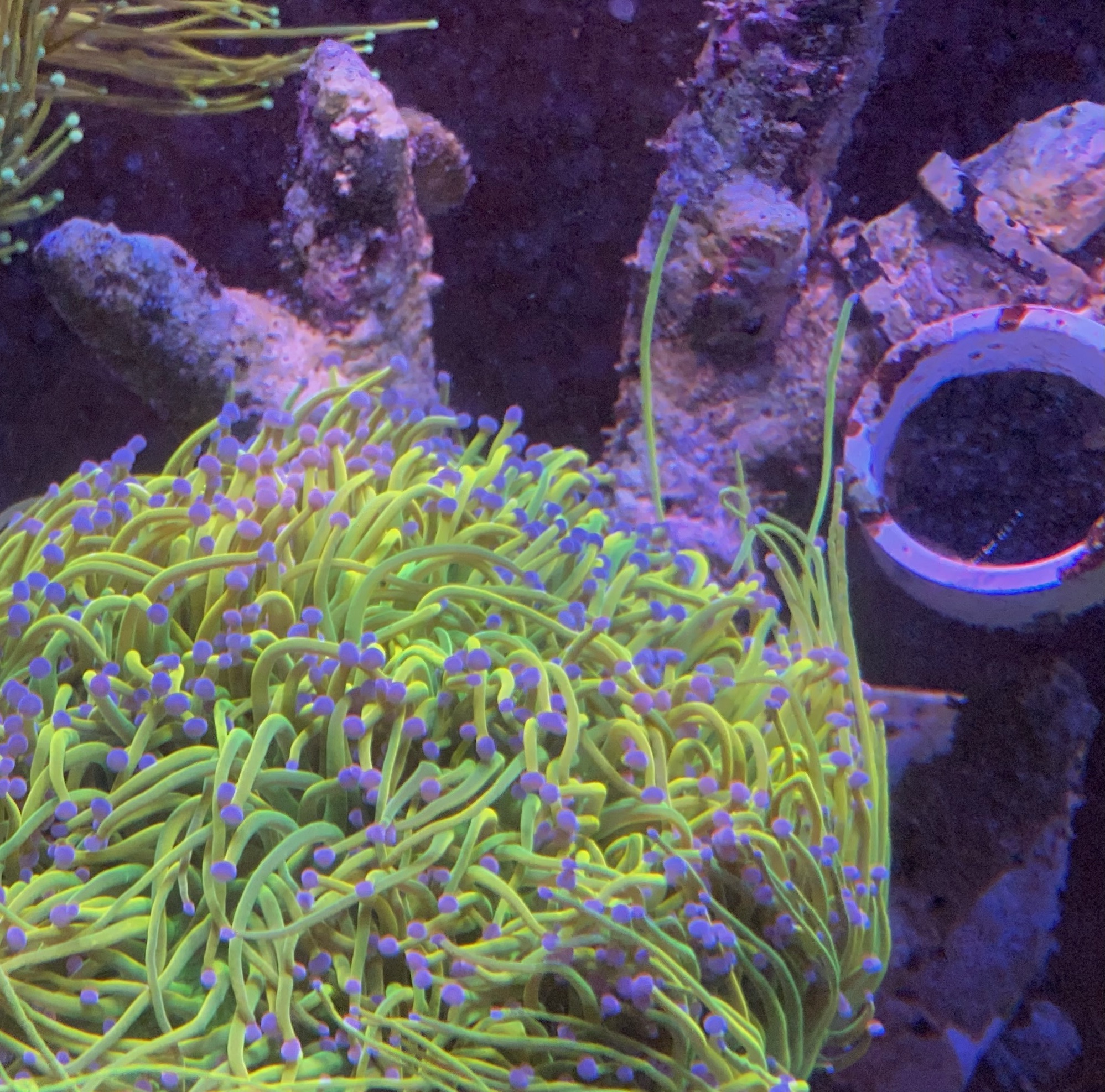
Many LPS corals employ sweepers including Favia, Pectinia, Euphyllia, Pavona, and many chalice corals. However, the most notorious coral for using sweeper tentacles is the Galaxea coral. While the polyps of this coral may seem small and the tentacles usually look short, this coral has been known to employ tentacles that can be up to a foot in length to sting neighboring corals, and the sting is very potent. Usually, a single sting will not cause much damage, but if multiple stings are allowed to occur this can cause damage or kill areas of other corals or even complete colonies. If sweepers are detected, they can be cut off with sharp scissors and they should be siphoned off. They will usually grow back quickly so this may need to be repeated. They grow back when a coral detects a threat, so that threatening coral may need to be moved in order to stop this process from reoccurring.
Coral cannibals
Another nastier means of coral aggression is when a coral uses mesenterial filaments to attack neighboring corals. These filaments released from the gut contain both nematocysts and digestive enzymes so when employed the attacking coral literally tries to sting and digest its neighbor. When employed these filaments can kill a neighboring coral overnight. When spotted these filaments need to be reduced and this can be done with a turkey baster, which is used to gently blow off any filaments that are visible and especially if they are near or touching a neighboring coral. Even if they do not initially kill a coral, they may damage it enough that it starts to decay or be consumed by algae.
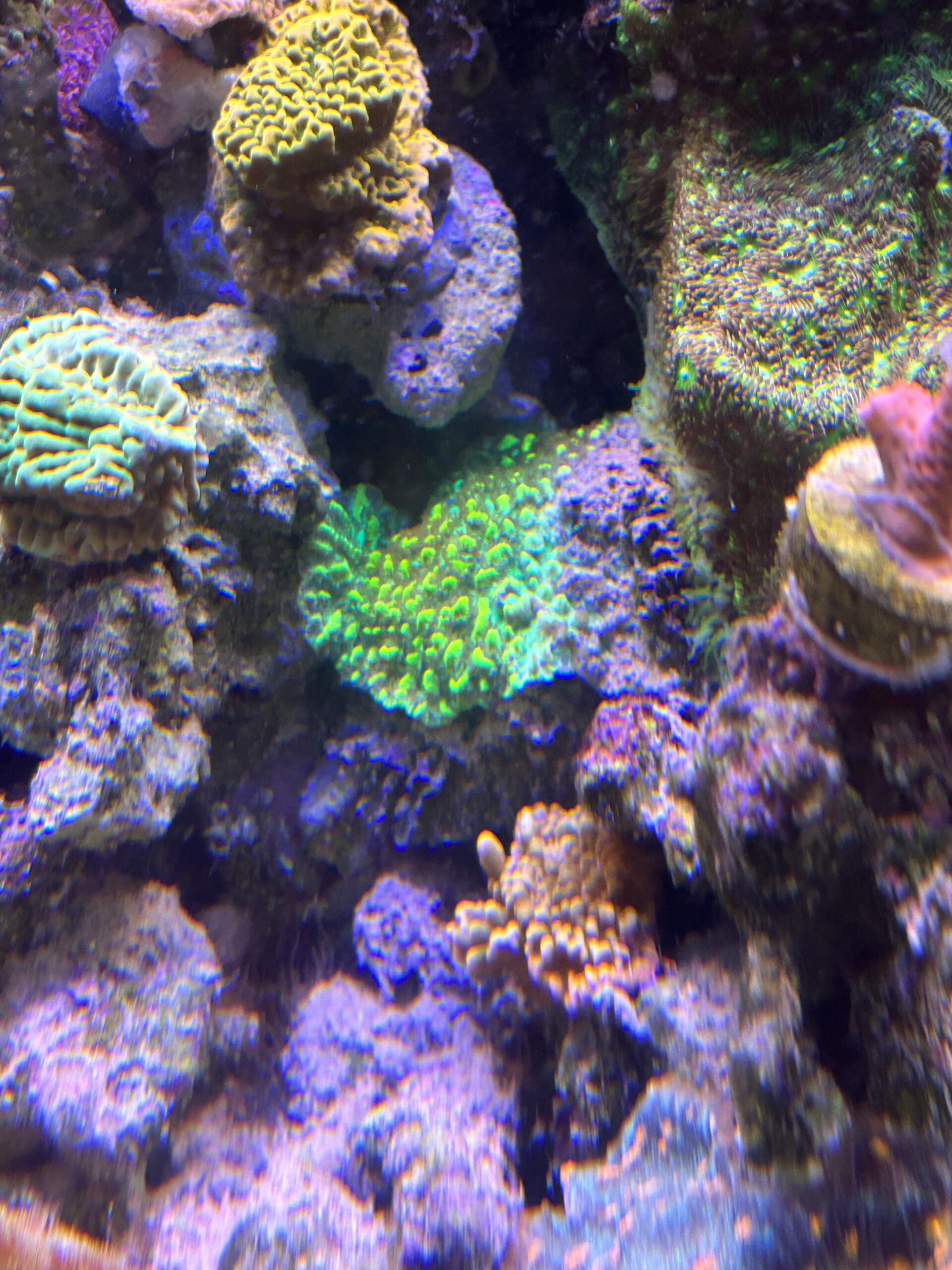
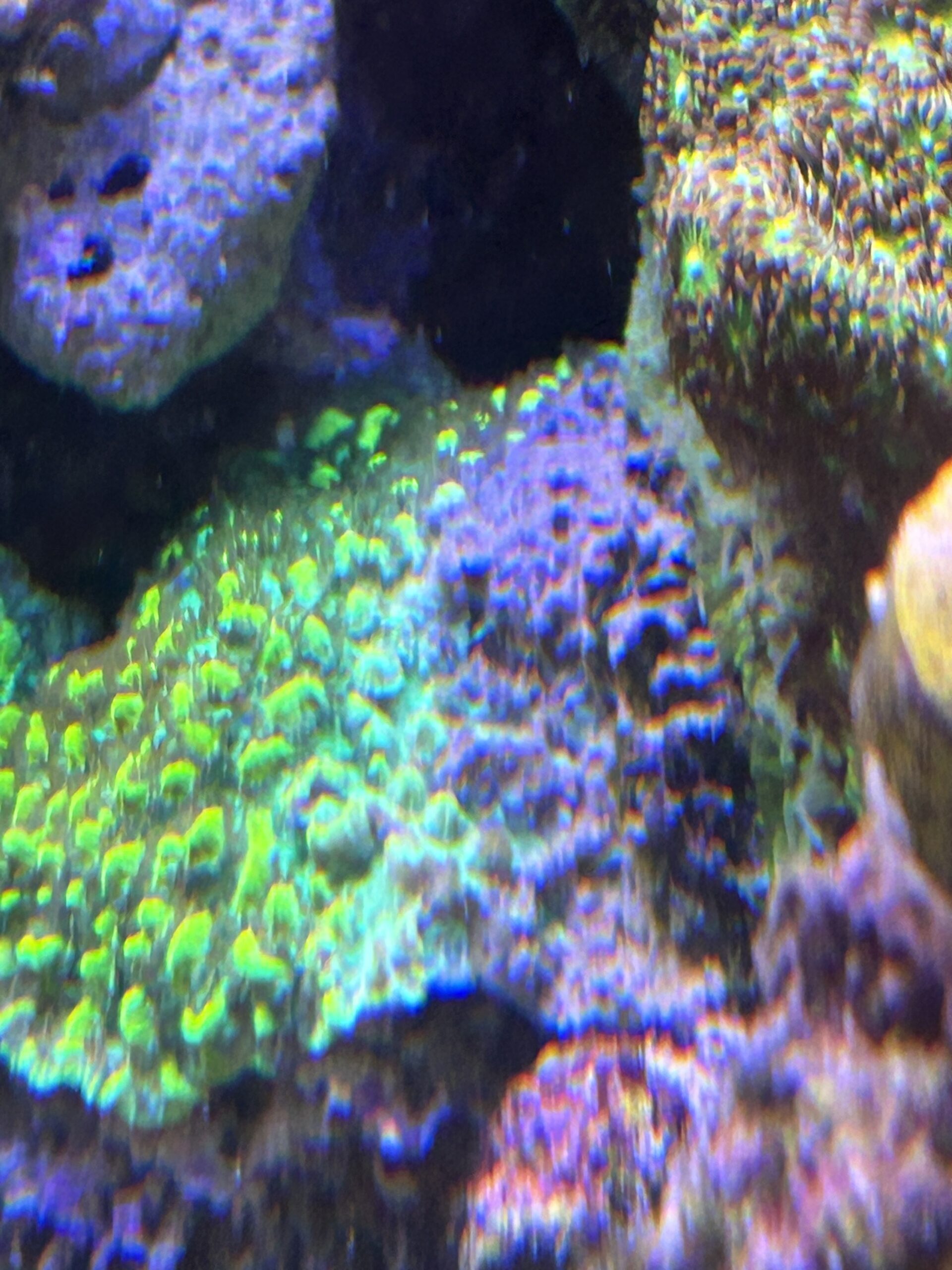
If this looks to be occurring the damaged area needs to be cut away and gently washed with peroxide. Then it needs to be moved away from the offending coral. If mesenterial filaments become problematic it may be necessary to physically wall off the offending coral so that it does not attack its neighbors. I have used pieces of live rock and even PVC to keep corals from attacking one another. If it becomes too much of a problem it may even be necessary to totally remove the offending coral from the tank.
Toxic chemical compounds
All of the above means of aggression are employed strictly by stony corals, soft corals have their own means of defense and aggression by releasing toxic chemicals. While these compounds may also be excreted by some stony corals, their production is more pronounced in soft corals. These corals contain and release compounds that keep fish and other corals from attacking them. Corals from the genera Sarcophyton, Lobophyton, Lemnalia, Nepthea, Xenia, Zooanthus, and Palythoa all produce compounds that are not only bitter tasting to keep from being eaten, but that are also harmful to other, especially stony corals. There may be as many as 50 toxic compounds produced by soft corals including terpenoids, and the highly toxic palytoxin.
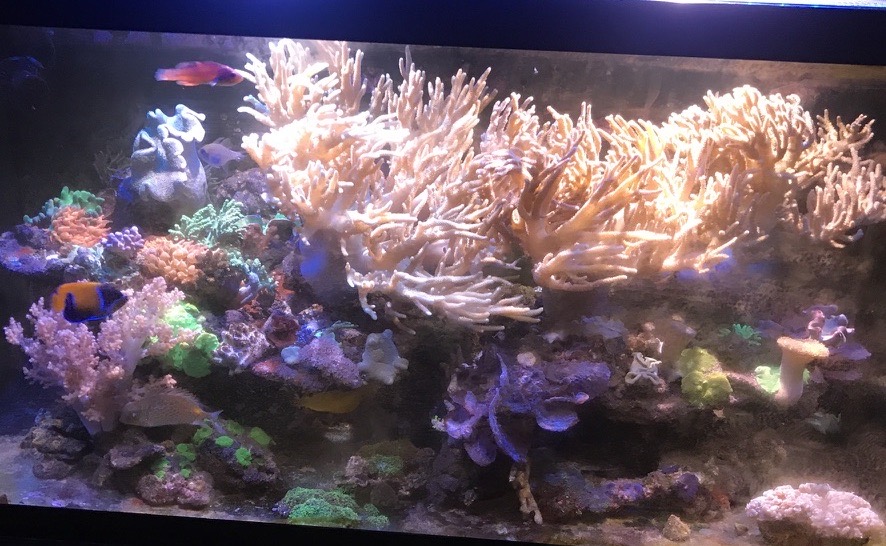
These toxins not only reduce predation, but they also produce allelopathy, which is the chemical inhibition of another plant or animal. The release of these chemicals is one of the reasons why keeping mixed reefs containing both soft and stony corals may be so difficult. Fortunately, some of this chemical activity can be reduced through the use of frequent water changes as well as the use of carbon, Polyfilters, and other chemical filtration. While these compounds can never be completely removed they can be reduced enough so that corals are not killed by their presence. However, I must stress that palytoxin can be toxic to both fish and any humans that come into contact with it. So if Palythoas or zooanthids are being kept, this needs to be taken into consideration and managed aggressively so that minimal contact occurs.
While our corals may look helpless and docile in our tanks, they are actually anything but that in reality. Their aggressiveness needs to be taken into account and managed throughout their stay in our tanks. Space, water changes, and chemical media are just some of the means necessary to control their aggressiveness. Providing enough space from the start is always a good idea in that if corals grow up together they tend to be less aggressive and in a lot of cases they will set up a kind of “demilitarized “ zone between them and not bother one another. However, as they get larger they do have a tendency to violate this truce, so it is necessary to always be vigilant to attacks. If warfare is allowed to occur unabated, corals will be lost for seemingly no reason, and this is why coral aggression needs to be understood and managed. Over time, as space in the tank comes at more of a premium, this aggression tends to get worse, so this too needs to be understood. Knowing that it is there will hopefully make everyone more vigilant.
